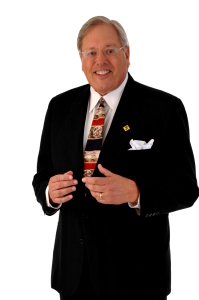It’s always been my personal view that because the ad business is so very visual, your outfit, meaning what you wear, sends a big message about you and your firm.
I believe too few agency leaders understand this or pay attention to this simple new business rule anymore. And that’s a shame. Here’s why. It’s a common perception that agency people are very different, meaning our industry is more fashion forward, more style conscientious and more fun than most other businesses. That’s why Hollywood takes such care to show agency offices, agency personnel, and agency people in such a colorful way when it portrays zany ad people on the movie screen or on TV. It matches perception. For this reason, I am always surprised at how shabby so many agency people dress when around clients, going to see clients, and presenting to clients. Think about the message this sends about your ad agency culture.
That means that prospects really don’t expect you to look like them because of the industry we come from. Just as they don’t expect their accountants, consultants, bankers or lawyers to dress like them either, but they hire these people and pay them a lot of money.
The error of not looking the part was driven home to me most vividly early in my new business career, and it’s stuck with me ever since. I had just been hired as SVP for a small agency, six people, in my home town. I was young, and I believed in the agency owner and thought I could help him grow. I was brought in to head up account service but mainly to do new business.
The Power of Targeting.
I had told the agency president that we needed a high profile account to put us on the map and get us growing. And I had targeted a large charity in town that was spending a ton of money on TV featuring the plight of children in many foreign countries and soliciting for viewers to “adopt” these needy children. The charity was using an out-of-state agency that was national but sleepy. In my mind, a perfect first target for us to knock off.
The Power of First Visits.
I call the charity up and wangled a first visit because I understood that in new business nothing really happens until you are across the desk from a good prospect. Phone calls, mailings, blogs, web sites, and all the outreach effort so important for agency growth are there with one objective only…to get you across the desk from a good prospect. That’s Job # 1 in new business, and I had accomplished that.
The Power of Two On a First Visit.
Within the week of joining the agency we were now across the desk from a big account, sitting in front of the charity’s ad manager, a delightful middle-aged woman named Barbara. I had gone in with a young AE in good Torch mode, well dressed in suits and ties because this flatters the client. And two people should always go on the first visit to again flatter the account, but more importantly it lets one person take notes while the more senior person (the SVP in this case) asks questions about the business. And note how small we would have looked if I had dragged the president along.
Trust Gets Them Talking.
On the first interview the client needs to talk 80% of the time, and prospects will talk if the agency builds trust. We quickly built trust by our business-like look and our friendly approach. So Barbara talked and talked and brought us up to date on her operation, answered all types of questions about how carefully they measure responses and the scope of their charity’s mission. And then I asked a key question as part of the Torch process: “If you were going to choose a new agency, how would you proceed?”
Barbara quickly responded that they were about ready to start an agency review (good news!) and that an RFP questionnaire (bad news! — no way for a fast close) was being prepared by their new EVP who had just arrived, a hard-charging executive, Barbara explained, who wanted to wake the organization up some. And firing the old agency and hiring a new agency was going to part of his “wake up” process.
Who To See On the First Visit.
Note a key point. You don’t have to see the decision maker (the new hard-charging EVP) on the first visit. You just need to see someone within the organization who would tell you the truth, and Barbara filled the bill as she told us all about her organization and its important world-wide mission to feed the children. I understood our job wasn’t to win the account on the first visit but get the information on the first visit to help us win the account at a later date, and Barbara really helped us do that.
I asked if we could be on the list to get the RFP, and Barbara agreed we should be on the list since we were in offices about four blocks away, and she liked us, I could tell. She was making up the “consideration set.” I went back a hero in my mind, but then the dreaded RFP arrived.
It asked for our agency TV reel and another TV reel with all our non-profit accounts. Note we didn’t have any TV reel at that time. Nothing. The RFP asked about our fund-raising capabilities, our overseas offices, our in-house TV production talent, and the number of people we could put on their account and more. Nothing here for us. My heart sank. There was no way we could get in if we just depended on that RFP.
The Power of Enthusiasm.
I remember the best new business tool around, something that most prospects respond to, and that secret weapon is enthusiasm. So I went in to my boss with a lot of enthusiasm and a plan to win the account. Here’s the plan. We would ignore the RFP questions that we couldn’t match up on and answer questions not asked, for example, about their brand and how we would support the charity’s mission in their field offices directly, something Barbara had mentioned they might like.
My boss asked me how we would do that, since we had no experience. I said we were going to obtain that important experience by visiting one of their most active field offices, the one in Guatemala. He looked at me like I had lost my mind. But I explained how we would do it. We would drop in as if we were in the area, you know (wink wink) working on another account, try to spend two days with their local organization, take photos, pick up story angles, and learn what the organization needed on the front line. It was a gamble but we needed a big account, and this one account was at hand, that is if we could get past the RFP.
The Power of A Great Boss Who Wants To Win.
Within four days we were flying to Guatemala, my boss and me. No, I had never been there before. We had cameras, tape recorders, a Spanish dictionary, and a big heart, and a large heap of enthusiasm, and not much else. The local office in Guatemala was surprised to see us, but quickly jumped to since we were from their home office city, and we were so interested in everything they were doing. That enthusiasm thing again. We were surprised to learn that they had never had visitors before, and they were so flattered to have us there. Yes, we were lucky but luck always favors the bold. They took us in and filled us with insights and a wonderful understanding of their mission and their needs at the local level.
We returned home, and poured all that stuff into that RFP, and won the RFP round because everyone at the charity was so impressed at the story we told. Barbara gave us a blow by blow run down of how well everyone liked our RFP answers which were filled with all the local content and insights. Within a few days were presenting for the account in front of their management team, with the new EVP executive in charge sitting in the middle.
The Power of the Suit.
Here’s where the story falls apart because on the day of the presentation, I wore a snazzy new suit to the presentation that I had just purchased. It was nice, but it was nearly white. Hey, it was July, hot and sultry in town. Besides, I looked great in that white suit; at least everyone at the club that previous Saturday night said so. I had never danced better, and I knew I would present like a champ with that new suit on.
The Bad News.
 The bad news call came back the next day. I wasn’t surprised, because I could feel it during the presentation. I wasn’t making contact with the EVP. Here’s what that EVP told my boss. By all accounts we should get their account. We gave the best presentation by far, and impressed everyone in the room with our approach, but he wasn’t going to turn the account over to some “southern plantation owner.” It seems my new white suit had cost us the account.
The bad news call came back the next day. I wasn’t surprised, because I could feel it during the presentation. I wasn’t making contact with the EVP. Here’s what that EVP told my boss. By all accounts we should get their account. We gave the best presentation by far, and impressed everyone in the room with our approach, but he wasn’t going to turn the account over to some “southern plantation owner.” It seems my new white suit had cost us the account.
I wasn’t fired that day, and I probably should have been. My boss drove the point home by buying me a new dark suit that day and presenting it to me through clenched teeth. And I never mentioned that account or that white suit again. But I worked like a dog to help that agency owner grow his firm. And we did. Three years later we were 60 people large so my new dark suit worked for my boss, along with not firing me.
But along the way, I never forgot that white suit. I never wore it again but I kept it for over 30 years in a plastic bag, moved it from house to house and from city to city in my career. And every now and then, I would go look at it when I thought about doing something really dumb.
Stuart Sanders
Photo by Stuart Richards and used under creative commons.


